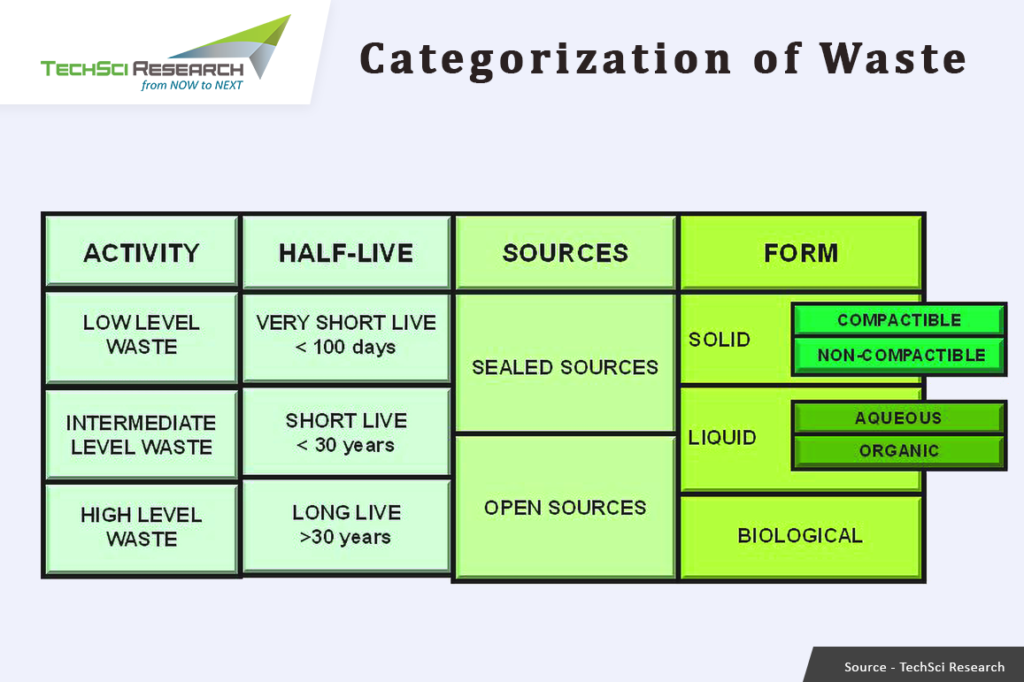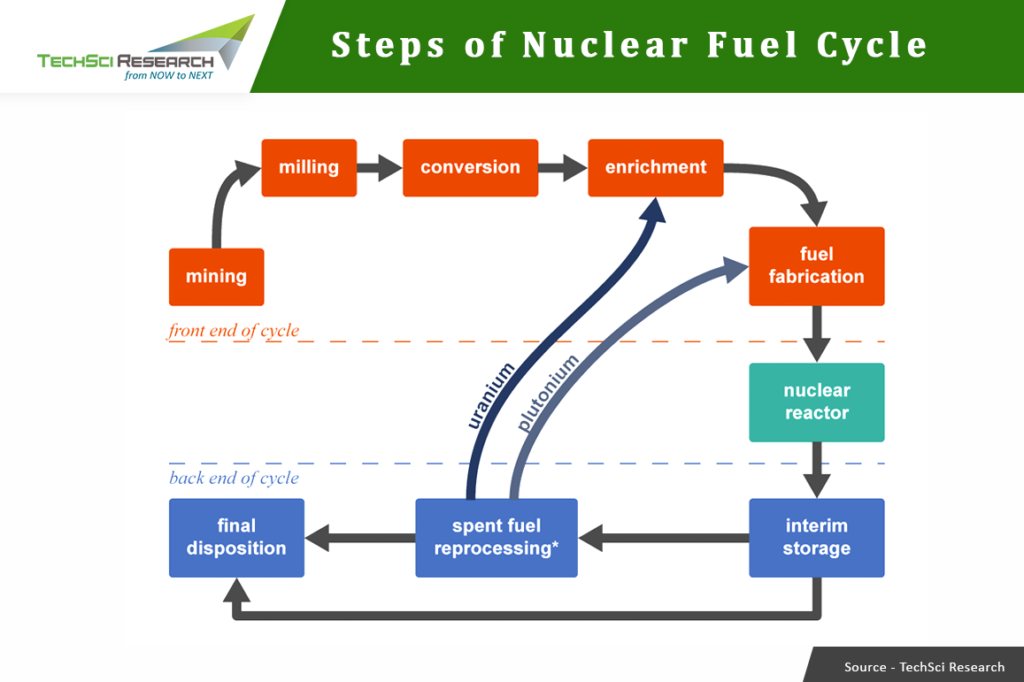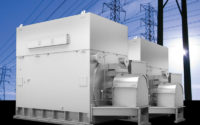Nuclear Waste Management: An In-Depth Guide to Navigating and Handling Radioactive Waste
As the world seeks cleaner and more efficient sources of energy, the role of nuclear power has become increasingly crucial. However, with great benefits also come great responsibilities, especially when it comes to managing nuclear waste. This radioactive waste carries significant environmental and health risks, which is why proper management and disposal methods are a top priority for industry leaders and policymakers alike. In this blog, we’ll explore the nuclear fuel cycle, various techniques for managing radioactive waste, international perspectives, environmental and health impacts, future innovations and research, and more. So, let’s dive into the depths of nuclear waste management.
The Nuclear Fuel Cycle:
Before delving into waste management techniques, let’s first understand the nuclear fuel cycle. This cycle describes the process by which nuclear power plants generate electricity. It consists of two phases, including the front end and the back end. Front-end steps prepare uranium for use in nuclear reactors and the Back-end steps ensure that used or spent but still highly radioactive, nuclear fuel is safely managed, prepared, and disposed of. It begins with the mining and milling of uranium, which is used as fuel for reactors. Nuclear reactors then generate heat by splitting uranium atoms in a process called nuclear fission. This heat is used to produce steam, that drives turbines for electricity generation. However, fission also produces a variety of radioactive isotopes, which are the source of nuclear waste.

Categorization of Waste:
- Exempt waste (EW): This refers to the waste, which meets the criteria for clearance, exemption or exclusion from regulatory control for radiation protection purposes.
- Very short lived waste (VSLW): This waste can be stored for decay over a limited period of up to a few years and then cleared from regulatory control as per arrangements approved by the regulatory body, for uncontrolled disposal, use or discharge. This class includes waste containing primary radionuclides with very short half-lives often used for medical and research purposes.
- Very low level waste (VLLW): This refers to the waste that does not require a high level of containment and isolation and, is therefore suitable for disposal in near surface landfill type facilities with limited regulatory control. Such landfill type facilities may also contain other hazardous waste. Typical waste in this category includes soil and rubble with low levels of activity concentration.
- Low level waste (LLW): This waste is above clearance levels, but with limited amounts of long-lived radionuclides. It requires robust containment and isolation for periods of up to a few hundred years and is fit for disposal in engineered near surface facilities. This class covers a very broad range of waste.
- Intermediate level waste (ILW): This refers to the waste that because of its content, particularly of long-lived radionuclides, requires a greater degree of containment and isolation that provided by near surface disposal. However, ILW needs no or little provision, for heat dissipation during its storage and disposal.
- High level waste (HLW): This refers to the waste with levels of activity concentration high enough to generate significant quantities of heat by the radioactive decay process or waste with immense amount of long-lived radionuclides that need to be regarded in the design of a disposal facility for such waste. Disposal in deep and stable geological formations usually several hundred meters or more below the surface is generally recognized option for the disposal of high-level waste (HLW).

Acts mandating the disposal of waste in India:
Activities concerning establishment and utilization of nuclear facilities and use of radioactive sources are carried out in India in accordance with the relevant provisions of the Atomic Energy Act, 1962.
The environmental protection aspects related to nuclear waste are governed by the Environmental Protection Act, 1986.
The regulations pertaining to radiation protection are governed by the Radiation Protection Rules, 1962. the Mines Minerals Prescribed Substance Rules, 1984 governs the Safety aspects in mining and milling of prescribed substances. The implementation of the Atomic Energy Safe Disposal of Radioactive Waste Rules, 1987 ensures the safe disposal of nuclear waste.
Radioactive Waste Management Techniques:
There are various techniques for managing radioactive waste, including Incineration, Storage, Shallow Burial, Deep Burial, In water, and Recycling.
1. Incineration
Incineration is a technique used to treat radioactive waste that cannot undergo other management methods. This technique involves burning the waste at high temperatures, reducing the volume and quantity of the waste. During the incineration process, the waste is heated to a high temperature, and the resulting ash is sent for further treatment. Incineration can be an expensive technique, as you need specialized equipment and expertise. Additionally, incinerators need to meet strict safety guidelines to ensure the health and safety of workers and the environment.
2. Storage
Storage is an important and common technique used for the management of low-level and intermediate-level radioactive waste. The waste is stored in containers to ensure radioactivity does not leak and harm the environment. These containers are placed in storage facilities, where they are monitored to maintain their integrity. Long-term storage is usually done underground, where waste is protected from external factors such as weather or natural disasters. Proper care should be taken, however, to prevent leaks, contamination, and breaches in security.
3. Shallow Burial
Shallow burial is a technique that involves burying the radioactive waste in a lined trench of several meters deep and covering it with a soil cover. The aim is to ensure that waste is securely contained and isolated from the environment. Shallow burial is commonly used for low-level and some types of intermediate-level waste. Adequate care and continuous monitoring are required to avoid any potential for leaks or infiltration of the soil. Since the waste is underground, this method can lead to fewer risks of harm for humans and the environment.
4. Deep Burial
Deep burial refers to burying the waste much deeper into the earth than shallow burial. This technique has the advantage of increasing the barrier between the waste and the environment, minimizing the risk of harm. Owing to the depth of burial, the waste is exposed to significant pressures, which can ensure containment. This technique is useful for radioactive materials with a long half-life, such as the spent fuel from nuclear power plants. However, the potential for waste leakage into the surrounding environment poses a significant threat and requires constant monitoring and safety protocols.
5. Transmutation
Transmutation is a new radioactive waste management technique that offers long-term solutions to managing radioactive waste. The technique involves changing radioactive elements into non-radioactive elements through the use of nuclear reactors and particle accelerators. The non-radioactive waste can then be recycled or disposed of without the risk of radiation.
6. In-Water and Recycling
In-water management involves disposing of liquid radioactive waste in offshore waters. Similar to shallow and deep burial, the aim is to ensure containment and isolation from the environment. Recycling is another method, which, as the name suggests, involves the reprocessing of waste for use again. This method is commonly used in nuclear plants, where spent fuel is reprocessed to extract the unused uranium and plutonium, which can be used in other processes. Recycling reduces the overall quantity of waste, and the material that cannot be reused can then be processed using other methods.
According to TeschSci Research report “Nuclear Plant Services Market – Global Industry Size, Share, Trends, Opportunity, and Forecast, Segmented By Plant Type (Pressured, Boiling, Pressurized Heavy Water Plants, Gas Cooled Plants), By Services (Plant Commissioning, Operations Management, Laboratory Management, Safety & Environmental Services, Emergency Response Services, Modernization, Decontamination & Decommissioning, Quality Management), By Region, By Competition, 2018-2028,” the Global Nuclear Plant Services Market was valued at USD 67.08 billion in 2022 and is anticipated to project robust growth in the forecast period with a CAGR of 5.01% through 2028.
The Nuclear Plant Services Market refers to a specialized sector of the global energy industry that provides a comprehensive range of services and solutions aimed at supporting the safe, efficient, and reliable operation of nuclear power plants. These services encompass various aspects of the nuclear energy lifecycle, such as the construction, commissioning, operation, maintenance, refurbishment, and decommissioning of the plant.
In this market, skilled professionals, service providers, and engineering firms offer their expertise in areas like nuclear safety, regulatory compliance, technological advancements and maintenance. They work closely with nuclear power plant operators and government agencies to ensure that nuclear facilities adhere to stringent safety standards and environmental regulations.
The top 5 nuclear waste management companies are:
- Augean PLC
- US Ecology
- JGC Corporation
- Perma-Fix Environmental Services, Inc
- Stericycle, Inc
According to Techsci Research report “Nuclear Waste Management Market – Global Industry Size, Share, Trends, Opportunity, and Forecast Segmented By Waste Type (Low Level Waste, Intermediate Level Waste, High Level Waste), By Reactor Type (Pressurized Water Reactor, Boiling Water Reactor, Gas Cooled Reactor, Pressurized Heavy Water Reactor), By Disposal Method (Incineration, Storage, Deep Geological Disposal, Others), By Region, Competition 2018-2028,” the Global Nuclear Waste Management Market was valued at USD 4.78 billion in 2022 and is anticipated to project robust growth in the forecast period with a CAGR of 3.02% through 2028.
Nuclear energy has long been praised as a dependable source of low-carbon electricity, providing a sustainable option to fossil fuels. However, managing nuclear waste poses significant environmental and safety challenges. This article examines the market for nuclear waste management and the key factors influencing its growth. Nuclear waste consists of various materials produced during nuclear reactions, mainly in nuclear power plants. These materials can remain radioactive for thousands of years, making their safe disposal a crucial concern. Nuclear waste mainly includes contaminated equipment, spent nuclear fuel, and other radioactive byproducts generated in nuclear power plants and facilities. The nuclear waste management market is a complex and evolving industry dedicated to the safe handling, transportation, storage, and disposal of radioactive waste. This market has experienced substantial growth due to multiple factors and is expected to continue evolving in the future. Here, we explore the main drivers shaping the nuclear waste management market. Despite safety and waste management concerns, nuclear power remains a significant source of clean energy. Many countries are investing in nuclear energy to reduce greenhouse gas emissions and meet their energy requirements. As the number of nuclear power plants increases, so does the amount of nuclear waste generated, driving the demand for effective waste management solutions.
Deep Geological Disposal:
The most widely accepted method of disposal for high-level radioactive waste is deep geological disposal (DGD). This involves placing waste thousands of feet underground in stable geological formations, such as clay or granite. The waste is then sealed in layers of engineered barriers, such as bentonite clay and steel. This method offers the greatest level of protection for humans and the environment, as it isolates the waste from the biosphere for hundreds of thousands of years. However, DGD remains a controversial and complex process, and no facility for high-level waste disposal is currently in operation in the United States.
Challenges in Nuclear Waste Management:
Despite significant progress in nuclear waste management over the past few decades, challenges remain. One of the most significant challenges is public perception and acceptance. Many communities are reluctant to host nuclear waste repositories, citing concerns about safety and environmental impacts. Additionally, technological challenges remain, such as identifying and developing effective methods for treating and disposing of waste. Economic and political factors also play a role, as the high cost of nuclear waste management can limit the willingness of governments and companies to invest in these efforts.
International Perspectives:
Nuclear waste management is a global issue, and many countries are actively working to develop safe and effective solutions. Sweden and Finland are leading the way in deep geological disposal, with facilities currently under construction. France, Japan, and the United Kingdom also have active disposal programs. The International Atomic Energy Agency (IAEA) plays a critical role in promoting international cooperation on nuclear waste management and safety.
Environmental and Health Impacts:
Proper management and disposal of nuclear waste are critical for protecting the environment and public health. Exposure to radioactive materials can cause cancer, genetic mutations, and other serious health effects. Nuclear waste can also harm ecosystems, contaminating water resources and impacting wildlife. However, the environmental and health impacts of nuclear waste can be mitigated through careful management and disposal practices.
Future Innovations and Research:
As technology and science continue to evolve, new innovations and research are emerging to improve nuclear waste management. For example, researchers are exploring the potential of partitioning and transmutation techniques to reduce the long-term risks associated with nuclear waste. Additionally, emerging materials and processes show promise for enhancing the performance of nuclear waste storage and disposal systems.
Public Awareness and Engagement:
Finally, raising public awareness and engagement on nuclear waste management is critical for building trust and support for these efforts. Educating the public on the risks and benefits of nuclear power and waste management, engaging in open and transparent communication, and involving communities in the decision-making process can help to build a more informed and supportive public.
Conclusion:
The management and disposal of nuclear waste remain a significant global challenge, but progress is being made. Through continued research, public engagement, and collaboration among governments and industry, we can improve our understanding of nuclear waste and develop safer and more effective solutions for managing it. By working together, we can navigate the depths of nuclear waste management and ensure a clean and sustainable energy future for generations to come.



